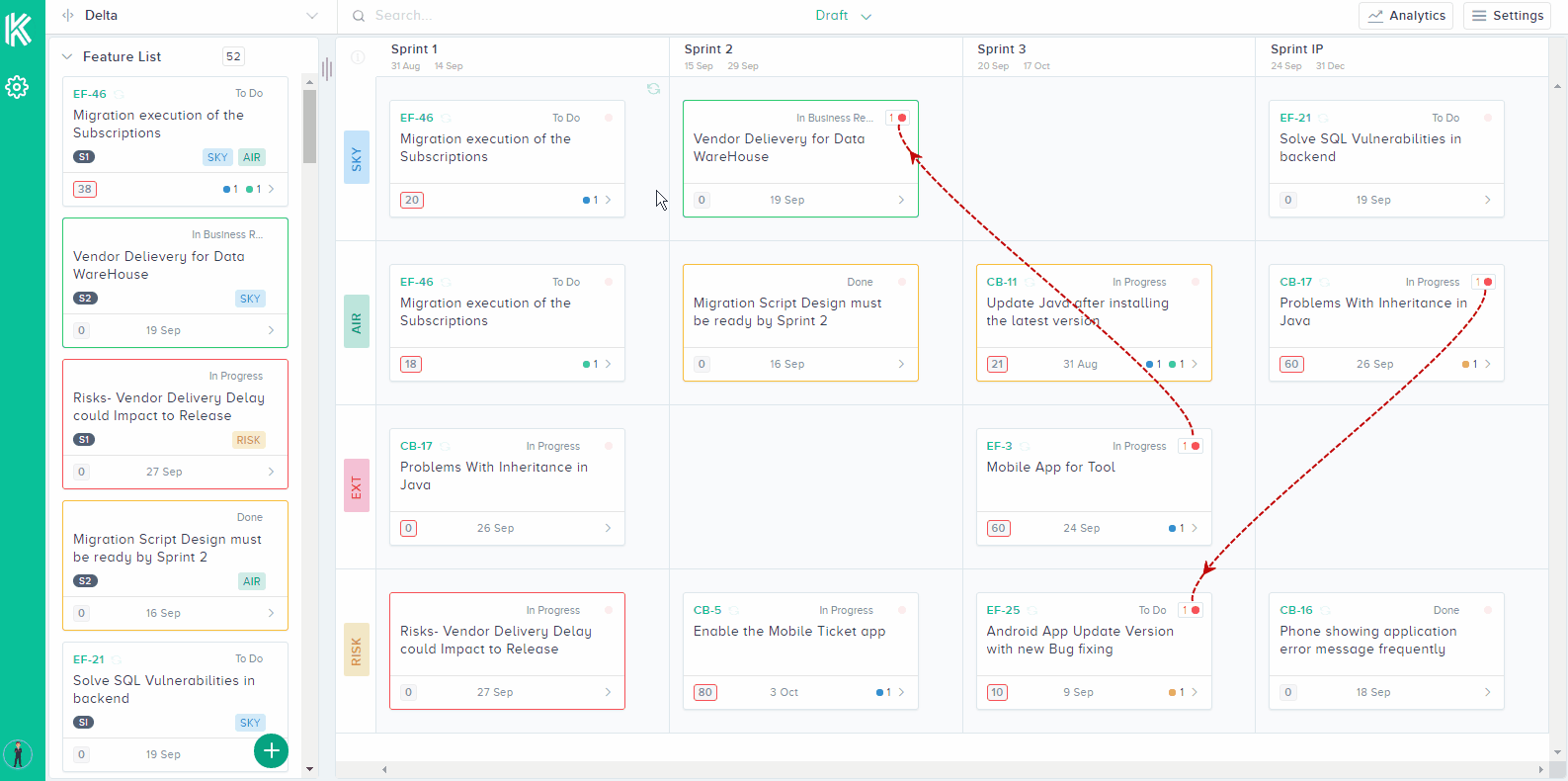What is a Solution Train?
The Solution Level is where large solutions are built with the collaboration from multiple Agile Release Trains which may have thousands of practitioners.
Solution train builds complex solutions with a Lean-Agile approach. It organizes and coordinates multiple Agile Release Trains into one, guiding the focus of hundreds or even thousands of individuals towards achieving a common mission.
A solution train starts like a conventional SAFe Program Increment Planning session. But instead of having Agile Teams that become a part of the Agile Release Train, there are Agile Release Trains that participate. It consists of different roles such as:
- Solution Train Engineer
- Solution Management
- Solution Architect
- Release Management
- System team
The teams are arranged and organized in order to achieve their business objectives by considering the business constraints and staying within the set budget. Part or the whole of the solution can be delivered in an iteration anytime. The artifacts of the solution train are:
- Vision
- Roadmap
- Milestones
- Releases
- Value Stream Epics
- Value Stream Kanban
- Value Stream Backlog
At the end of every iteration, there is a solution demo. This is where everything that has been done is demonstrated to the stakeholders or product owners and feedback is received. It is used to evaluate the integrated solution that has been created by the Agile Release Trains in the Solution Train.
Problems faced by a Solution Train
Complex solutions often need appropriate vision, thorough analysis, design, architecture, execution and most importantly “Single place for tracking their progress”. According to our recent study, Solution Train Engineers face these challenges.
- An absence of a single simplified view to answer stakeholder queries about solution progress and risks
- Due to complexity and a lack of visibility, Solution Team is unable to recognize a problem as soon as it arises.
- Complex or larger enterprises have more than one Release Train at any given time. These Release Trains are often dependent on each other over the same time span. They involve multiple agile teams, suppliers and shared resources that are often split geographically affecting time to market.
- Coordinating the dependencies on a high level is very difficult to maintain as it is the teams on the lower level that provide the key information on dependencies.
Solution Board
A Solution Board keeps all of the aspects of the Solution Level and its challenges, mentioned above, in mind to offer the best view across multiple Product Areas or Release Trains. This will assist managers to coordinate the delivery and ensure the value is provided incrementally. The Solution Board provides you can with the following features:
- All in one view for all of your release trains.
- Aligns multiple and or remote Release Trains and brings them on to one page by adjusting their focus on to one common vision.
- Mapping dependencies amongst multiple and or remote Release Trains
- The Solution Board replicates Cadence and synchronization which keep all the objectives and the routine for the Agile Release Trains to follow.
- Allows involvement of customers and stakeholders to provide their feedback.
Pre and Post PI Planning Session for Solution Board
The Pre and Post PI Planning sessions are instrumental in aligning the tasks to create realistic objectives and to deliver according to an achievable plan. It also combines the efforts of all the Agile Release Trains into one unified direction.
A pre-PI planning session is held among key members of the participating cross-functional agile teams. This ensures perfect alignment and collaboration amongst everyone to help manage the workload efficiently. The participants involved are Solution Train Engineer, Solution Management, Solution Architect, Release Train Engineer, Scrum Master, Stakeholders etc.
For the pre-PI planning session, a summary of the progress of the previous Program Increment is used to devise the business context, vision and milestones of the PI. This helps in creating a roadmap that also clarifies the upcoming capabilities, risks and dependencies. This is reviewed by the Solution and Program Management. The activity of the pre planning is represented on a solution board which has the anticipated delivery dates.
As for the Post PI Planning session, the results of the previous PI combined with an agreement of the PI objectives, have to be implemented in the next Solution Demo.
About Kendis
Digital boards to manage dependencies, multiple teams and program increments for scaling agile initiatives. Kendis works on top of JIRA and other agile tools, your teams can keep on working with their existing JIRA boards and program level and above is planned and managed at Kendis.
Try out 10 days free trial or book a demo with our product expert.










